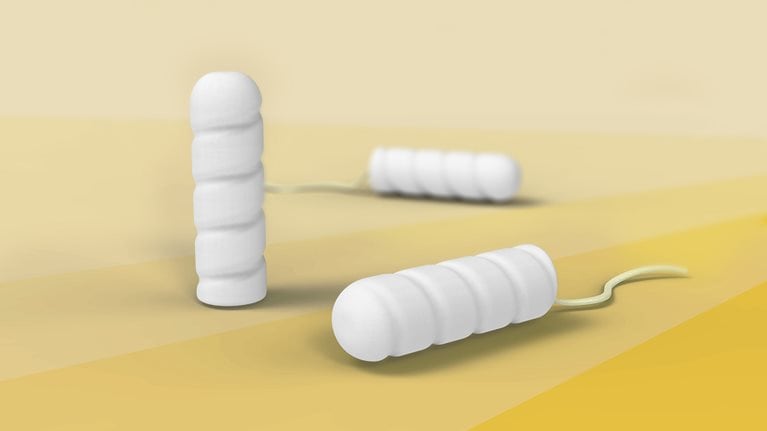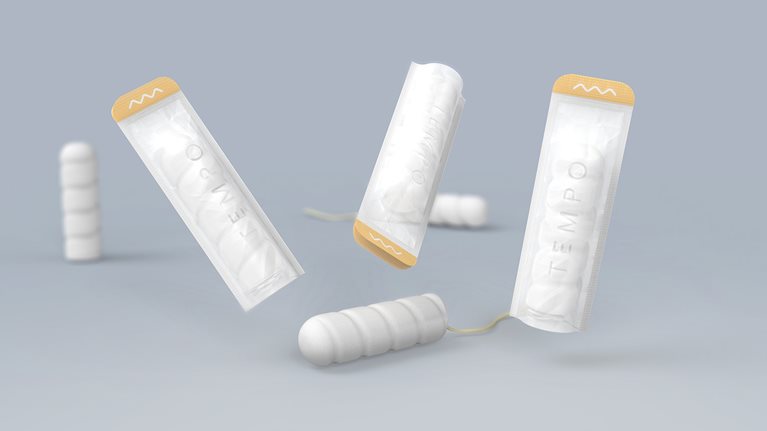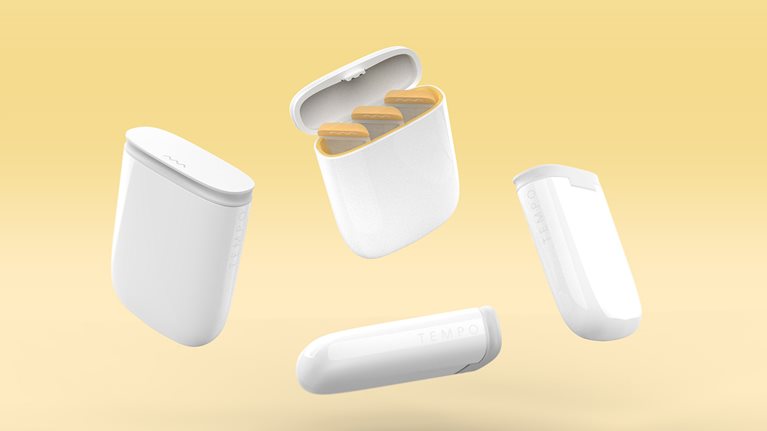Successful entrepreneurs can attest: the spark of inspiration that produces a promising innovation is immensely thrilling. However, the many steps that follow in getting an invention to market can seem overwhelming: developing prototypes, securing funding, defining distinctive branding and messaging, lining up production—the list goes on and on.
These were just some of the challenges facing Amanda Calabrese and Greta Meyer, the winners of our Robert Howard Next Step (RHNS) Award, and the inventors of Sequel, (formerly known as Tempo) a reengineered tampon that significantly reduces time to leakage. As former athletes at Stanford University, they understand the shortcomings of traditional designs for active women. And as recent product design graduates, they have the technical and foundational knowledge to devise a new kind of tampon that could transform a long-dormant category. This is how we helped in their journey from concept to product.

Advancing a stalled history
The modern design for the tampon was patented by Dr. Earle Haas in 1931. Since then, the product has remained largely unchanged, with packaging and sustainability demands being the primary differentiators among top brands. Lack of development and advancement within menstruation products is a symbol to the unequal attention paid to women’s health in general. Meanwhile, the higher costs that women must pay for consumer hygiene products have long made them and other menstruating people feel taken advantage of.
Sequel’s design concept features spiraled cotton fibers that increase time before possible leakage eightfold, which has the potential to reverse that trend for tens of millions of menstruating people. When the concept won the RHNS Award in June 2019, the accolade marked the beginning of the next, more arduous phase of their journey: getting a physical product on the shelves. Perhaps the most significant hurdle is that tampons are considered medical devices and must be submitted to the Food and Drug Administration for approval—a process that entails validating clinical data and more rigorous design and outcome documentation than any consumer product.

Taking a comprehensive, design-driven approach to product development
As part of the RHNS Award, our health + medical designers gifted roughly 200 consulting hours to guide the founders through a two-week journey to market. The multifunctional team included Stephanie Henze, a design expert with deep medical and FDA experience; Sara Cinnamon, an engineer and former medical device entrepreneur; Charlie Hartzell, a strategist and industrial designer; Colton Sanford, an industrial designer; and Dane Anderson, a research lead.
During the two-week sprint, the team concentrated on making key decisions around business strategy, manufacturing, marketing, and regulatory requirements. The designers also ensured Sequel’s messaging identified and communicated its unique benefits and gave advice on branding elements—such as logo and package design, including sustainable and ecofriendly options.
According to Hartzell, “The key to approaching this challenge was understanding and amplifying the differentiating traits and messaging they wanted to bring to market. They already had a unique technology that we wanted to show off, but beyond the final product we needed to create a comprehensive brand story that connected the dots between many of the user touchpoints.”
Subsequent meetings focused on the research and documentation processes for FDA submission, as well as the evaluation and selection of manufacturers. To start, the team provided Sequel with a research screener to find appropriate test participants and a clinical protocol for validating the safety and performance of their design.
“Having experience with medical studies, we know the big hills to climb and the common potholes,” noted Anderson. “The goal was not only to help them plot a map, but also give them an understanding of how to navigate it.”

Preparing to go the distance
We also helped Sequel’s founders understand the start-up scene. Many early-stage start-ups are so focused on getting past the next milestone that they don’t stop to appreciate the progress they have made. Teamwork and collaboration are crucial to continued growth. Sara Cinnamon worked with the founders to make sure they took this to heart: “You’re in this for the long haul to change the world in a small and important way. Many, many days will be hard, but never forget to celebrate the successes—and each other. That mutual respect and reflection on progress will help carry you through those tough times.”
Indeed, the RHNS Award allows our team to share how it applies its combined depth and breadth of experience to create a strategy and development process to help yet another innovative product potentially succeed in the market.
Stephanie Henze highlighted the importance of the RHNS Award to McKinsey Design, “It was great watching our more junior crew members gain confidence and professional joy leading a start-up through problems where cookie cutter approaches simply wouldn’t work. It was also nice to see Sequel’s appreciation for design as a craft grow.” She adds, “For me personally, it’s gratifying to see how my years of experience and a few hours of focus can accelerate a process at a rate that is simply impossible to experience with larger start-ups or companies. On each of the 13 RHNS projects we have worked on, those 100 or 200 hours donated get rewarded with a gratitude and impact that remind us every time how powerful our profession can be.”
From a company name change to a patent-pending design, and some secured funding, this team has come a long way. We can’t wait to see what comes next!